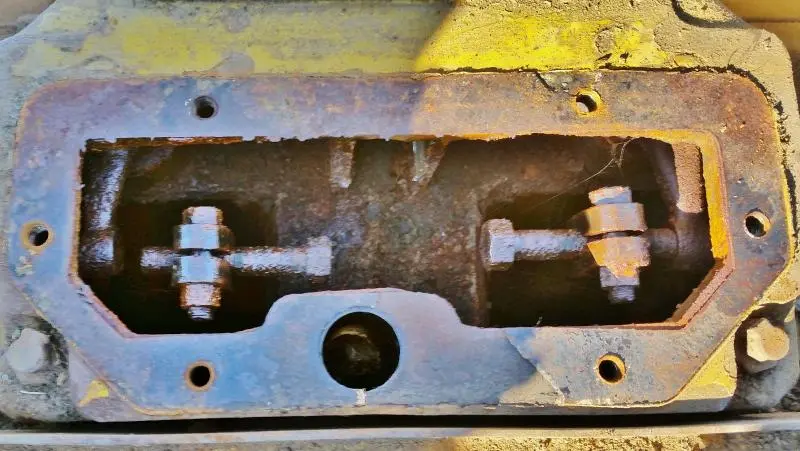Reply to Peter C:
Thanks, Mike. You stopped me from pouring diesel in just in time. I will use the citric acid solution if I get the time this winter otherwise the process will start next spring when I get back to the 22.
Is there any harmful effect to the machine's components from the citric acid if left in too long?
Pete
[quote="Peter C"]Thanks, Mike. You stopped me from pouring diesel in just in time. I will use the citric acid solution if I get the time this winter otherwise the process will start next spring when I get back to the 22.
Is there any harmful effect to the machine's components from the citric acid if left in too long?
Pete[/quote]
That's a good question Pete, on my RD6 I can say no, the left steering clutch that soaked in citric acid for about 8 weeks works great, it is easier to pull on the lever than the right side but never slips, nor do the bearings make any odd noises, I think it is easier to pull on the left lever because possibly the clutch pack springs are half rusted through after sitting in water for years and so do not create the same pressure on the steering clutch lever, but I'm the first to admit I'm dumber than everyone here.
I've used citric acid successfully 50 or 60 times over the past 5 years on small nuts and bolts up to complete sets of tracks on my small Cats like the Fifteen and the only time I've had an issue with it was with a pilot motor head I left sitting in the solution over winter for about 6 weeks trying to clean out the cooling passages, I had been told by a "Expert" citric acid was completely harmless to steel but I discovered on machined surfaces like that head it slightly etched the machined surface, but to be honest I might have had the solution too strong, like 1 cup of powder to 2 gallons of water as no one has ever given me the proper ratio, so it has been a suck it and see deal.
I'd suggest you use about 1 cup of citric acid powder dissolved in enough hot water to fill the steering clutch compartment, and if you can find some way to gently agitate the solution even better, I used a cheap $10 fish tank pump on my RD6 though there is much more open space in the RD6 steering clutch compartment compared to the 22's and you will find citric acid works much faster in warm weather, on your steering clutches for example it will have all the rust dissolved away in just 10-14 days if the daytime temps are 80, if temps are down to 35 then expect it to take a month or more. Be aware you will probably find the solution might pass through the old oil seals into the gearbox and final drive cases though I assume you will be draining the old oil out of them over winter so it should not be a concern.
If you have never used citric acid before mix up some in a 2 gallon bucket, say half a cup of acid in that volume of water and sit a few rusty bolts or parts in the solution and put it somewhere safe inside for a couple of weeks obviously away from young kids, I've found it completely benign and never bother using gloves when handling parts in the solution, I mean it is used as a food preservative and most of us drink it or eat it every day, you could use Coke or Dr Pepper over a longer period of time for a similar result as most sodas contain citric acid, you will find a thin grey, mud like sludge develops on the parts if the solution is not being gently agitated.
Good luck, you have nothing to lose Pete, because if you have to split that tractor to pull the steering clutch allow at least 2 weeks, I've done two D2's now and it takes a lot longer than you think it will because you end up replacing more parts than you intended.
Regards
Mike
